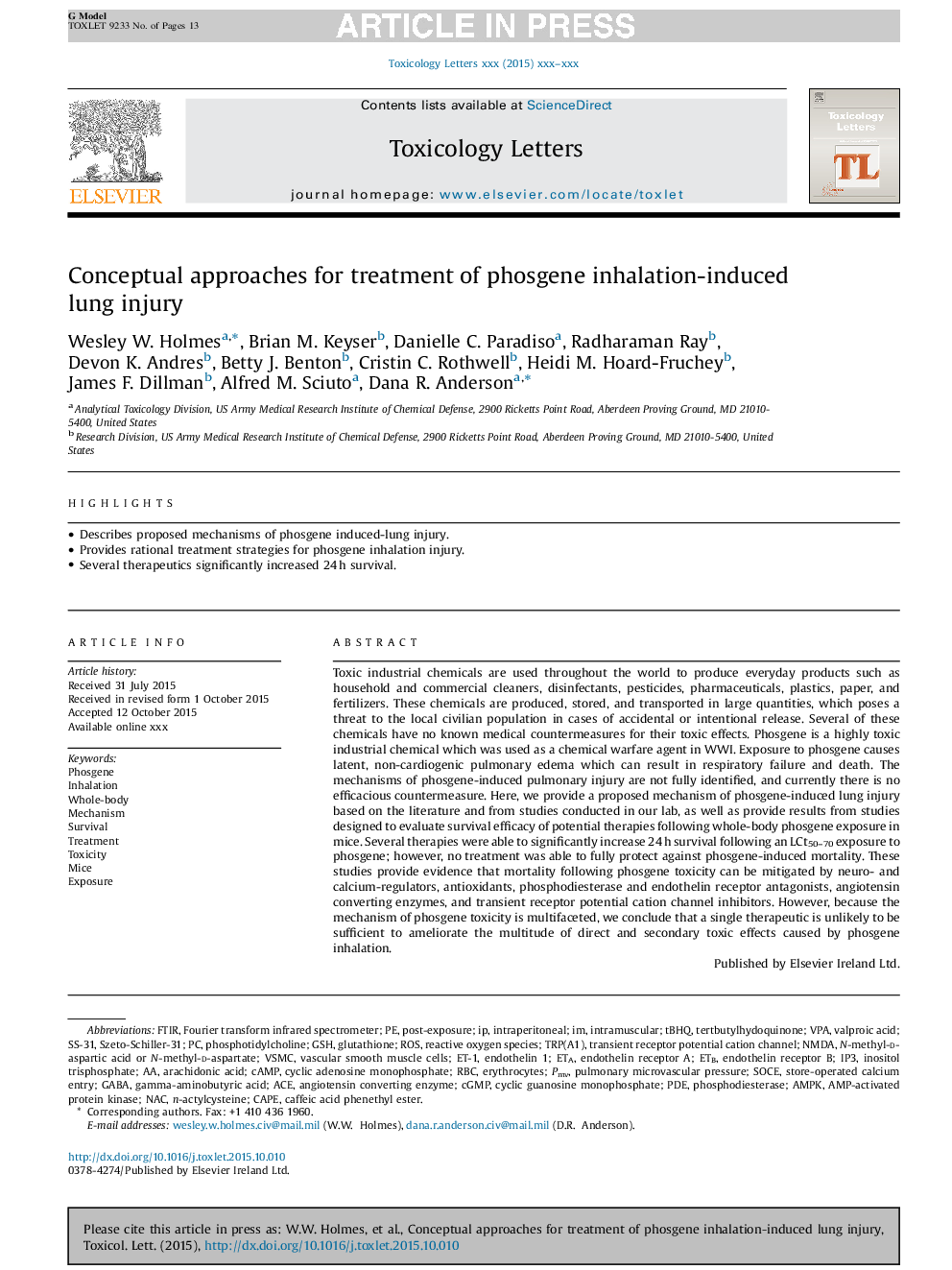| Article ID | Journal | Published Year | Pages | File Type |
|---|---|---|---|---|
| 5859829 | Toxicology Letters | 2016 | 13 Pages |
Abstract
Toxic industrial chemicals are used throughout the world to produce everyday products such as household and commercial cleaners, disinfectants, pesticides, pharmaceuticals, plastics, paper, and fertilizers. These chemicals are produced, stored, and transported in large quantities, which poses a threat to the local civilian population in cases of accidental or intentional release. Several of these chemicals have no known medical countermeasures for their toxic effects. Phosgene is a highly toxic industrial chemical which was used as a chemical warfare agent in WWI. Exposure to phosgene causes latent, non-cardiogenic pulmonary edema which can result in respiratory failure and death. The mechanisms of phosgene-induced pulmonary injury are not fully identified, and currently there is no efficacious countermeasure. Here, we provide a proposed mechanism of phosgene-induced lung injury based on the literature and from studies conducted in our lab, as well as provide results from studies designed to evaluate survival efficacy of potential therapies following whole-body phosgene exposure in mice. Several therapies were able to significantly increase 24Â h survival following an LCt50-70 exposure to phosgene; however, no treatment was able to fully protect against phosgene-induced mortality. These studies provide evidence that mortality following phosgene toxicity can be mitigated by neuro- and calcium-regulators, antioxidants, phosphodiesterase and endothelin receptor antagonists, angiotensin converting enzymes, and transient receptor potential cation channel inhibitors. However, because the mechanism of phosgene toxicity is multifaceted, we conclude that a single therapeutic is unlikely to be sufficient to ameliorate the multitude of direct and secondary toxic effects caused by phosgene inhalation.
Keywords
CAPEcGMPPDEAMPKRBCACEInositol trisphosphateNACGSHIP3NMDAET-1TBHQPMvSOCEVSMCVPAETAETBPhosphotidylcholineAMP-activated protein kinasecAMPROSCyclic adenosine monophosphateangiotensin converting enzymeErythrocytesInhalationArachidonic acidcaffeic acid phenethyl estergamma-aminobutyric acidendothelin 1SurvivalWhole-bodyintraperitonealExposureTreatmentVascular smooth muscle cellsToxicityFTIRFourier transform infrared spectrometerIntramuscularPhosphodiesterasephosgeneMicecyclic guanosine monophosphateMechanismStore-operated calcium entryValproic acidPost-exposureTransient receptor potential cation channelGABAGlutathioneReactive oxygen speciesendothelin receptor Aendothelin receptor B
Related Topics
Life Sciences
Environmental Science
Health, Toxicology and Mutagenesis
Authors
Wesley W. Holmes, Brian M. Keyser, Danielle C. Paradiso, Radharaman Ray, Devon K. Andres, Betty J. Benton, Cristin C. Rothwell, Heidi M. Hoard-Fruchey, James F. Dillman, Alfred M. Sciuto, Dana R. Anderson,
